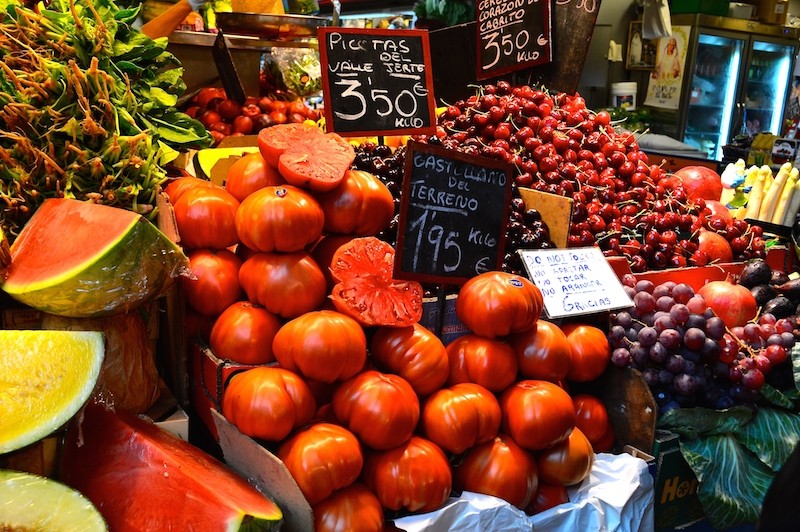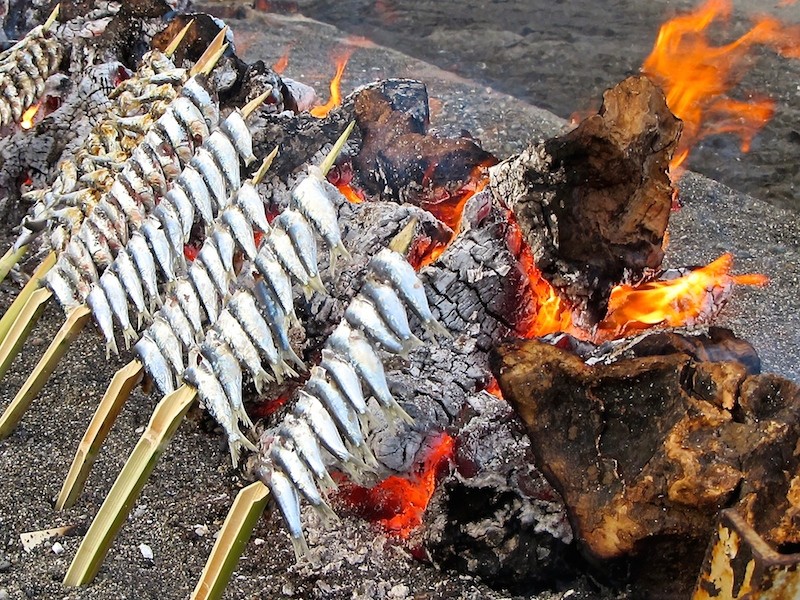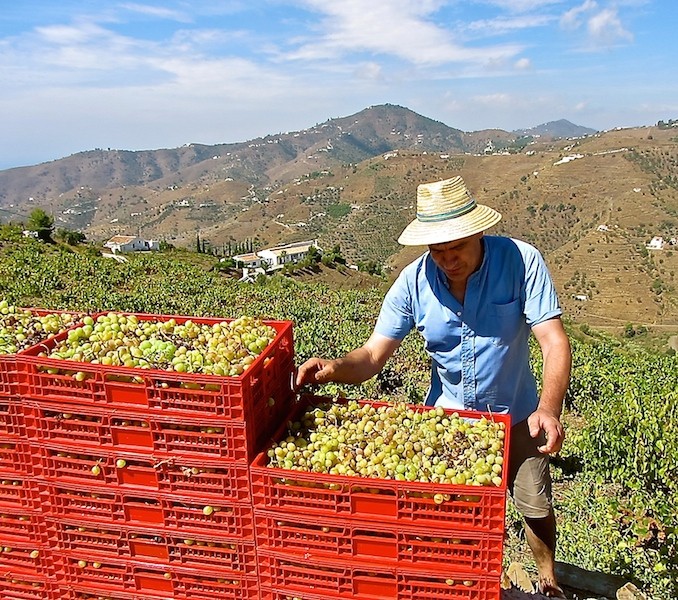Spain is a country where history and gastronomy merge, and nowhere is this truer than in the southern region of Andalucia. Many threads of influence and tradition run through Andalucian cuisine – from the Phoenicians, who first arrived on these shores almost 3,000 years ago, and the Romans who introduced wheat, olives and vines to the area, to the Moors who imported their expertise of almond growing, saffron and rice.
In years gone by, food often defined where we were from, but now food-lovers’ travel choices are influenced because of a region’s gastronomy. We no longer just eat to live – many of us live to eat. So here we’ll share with you a local’s guide to many of the authentic foods of the Axarquia, a mountainous coastal region in the eastern corner of Malaga province. That way, you can really experience the local culture via its cuisine.
Malaga City Centre
We’ll start our journey in Malaga, a city whose history can be traced back more than 2,800 years, making it one of the oldest in the world. Malaga has undergone a cultural renaissance over the past few years, and rather than being just ‘the place where the airport is’, the city is now one of Spain’s unmissable destinations. You’ll discover ancient architecture, a well-established international art scene, important cultural and religious festivals, tapas bars and elegant fine dining as well as the warm, clear waters of the Mediterranean Sea lapping at Malaga’s long, sandy beaches.
Why not give your senses a treat and head to the Atarazanas market? Here, the Moorish arched entrance and the huge, colourful stained-glass window tell the history of the origins of this bustling marketplace. As you wander around, take in the dazzling displays of freshly caught fish with their scarlet gills and scales glistening under the spotlights. You can marvel at the kaleidoscope of colours of the artistically displayed fresh fruit and vegetables and savour the counters of aromatic cheeses, spices, artisan bread, marinated olives, dried fruits, nuts, chorizos and ham – all perfect for a gourmet picnic. Or you could try cazon adobo (marinated white fish in a light batter) at one of the tapas bars inside the market, where the fish is so fresh it almost melts in your mouth.
La Axarquia
From Malaga, consider heading east along the sub-tropical coast of the Axarquia, past orchards of mango and avocado trees, where you’ll be spoilt for choice with an array of chiringuitos (beach bars) stretching for miles.
Sardines and Anchovies
It’s hard to resist the smell of espetos de sardinas (sardines) being cooked on skewers over a wood fire on the beach; so simple yet totally delicious. Alternatively, you could choose one of Malaga’s favourite dishes, boquerones (anchovies), either deep-fried in olive oil or marinated in vinegar, salt, garlic and olive oil. Boquerones en vinagre are a favourite in many places serving tapas.
Kid and Black Pudding
Most of the white villages of the Axarquia have an association with a particular fruit or traditional product and host an annual gastronomic festival to celebrate. Periana, for instance, is known for juicy peaches, and Canillas de Aceituno is renowned for the best oven-roasted kid and black pudding for miles around.
Migas
Elsewhere in the region, Torrox hosts the Migas festival each December (you can read more about this on Eastofmalaga.net), when more than 40,000 people feast on the traditional Andalucian peasant dish (fried breadcrumbs liberally laced with garlic, small pieces of chorizo, ham or peppers).
Miel de Caña
The mountain village of Frigiliana once voted the prettiest village in Andalucia, boasts the last remaining factory in Europe producing miel de caña (literal translation: sugar-cane honey, but in reality this is molasses). Production began at the Ingenio Nuestra Señora del Carmen (Mieldelatorre.com) almost three centuries ago, and the same traditional recipe without additives is still used today. Miel de caña is delicious when drizzled over berenjenas (deep-fried eggplant) or cod fritters.
Torta de Algarrobo
A product that is 100% ‘made in Malaga’ is the crumbly Algarrobo cake, a perfect accompaniment to your morning coffee. The ingredients are all sourced within the province, and this gastronomic delight consisting of olive oil, almond flour, aniseed, sugar and cinnamon is put together with love at the Carmen Lupišñez factory, within the village of Algarrobo. You can buy a packet of these cakes at any of the local street markets and little grocery stores for just a couple of euros. Perfect to pop in your suitcase to take back home!
Almonds and Ajoblanco
If you’re lucky enough to be travelling to the Axarquia during January, you will see the delicate pink almond blossom on trees throughout the region. First introduced by the Moors many centuries ago, the almond is an important ingredient in local cuisine, from sauces, stews or simply roasted and salted. As you’re wandering around Malaga city you’ll be sure to see a small table at the side of the street where a vendor is selling roasted almonds in a paper cone. You might also like to try ajoblanco (Malaga’s answer to gazpacho) – a refreshingly cold, garlic and almond soup.
Wine in the Axarquia
As you travel around this region you will see the dry, steep terraced land that is perfect for cultivating vines and, in particular, the sweet moscatel grapes which enjoy the sun and the influence of the sea. No mechanical devices are used for picking – these grapes are all hand-picked to make the local sweet (high-proofed) aromatic wine. Served cold, these wines pair well with blue cheeses, many desserts, and chocolate, and are the perfect choice for your sobremesa (the time after a meal when you sit around the table and enjoy a drink with friends).
The mountain village of Competa, which lies in the foothills of the impressive Sierra Almijara and Tejeda mountains, hosts the annual Noche del Vino (not only a night of wine but a whole day of it!) Every year, thousands of people descend on the village to witness the ritual treading of the grapes and share in the fun and festivities to herald the start of the grape harvest.
Whilst you’re in the area, you might also like to take a tour of one of the excellent wineries nearby. Bodegas Bentomiz near Sayalonga supplies their Ariyanas wines to many of the finest restaurants in the world, and you can enjoy a tasting or a delicious winemaker’s lunch at their contemporary headquarters.
When are the foodie-related fiestas in the Axarquia?
- Dia de Morcilla (black pudding), Canillas de Aceituno; 28th April 2024
- Dia de la Cereza (cherry), Alfarnate; June 2024 (date TBC)
- Fiesta del Gazpacho; Alfarnatejo; 3rd August 2024
- Noche del Vino (sweet wine), Competa; 15th August 2024
- Fiesta del Ajoblanco (cold almond soup), Almachar; September 2024 (date TBC)
Welcome to La Axarquia – the authentic side to Malaga.
Tempted? Check out our edit of luxury Axarquia villas.
You might also like








